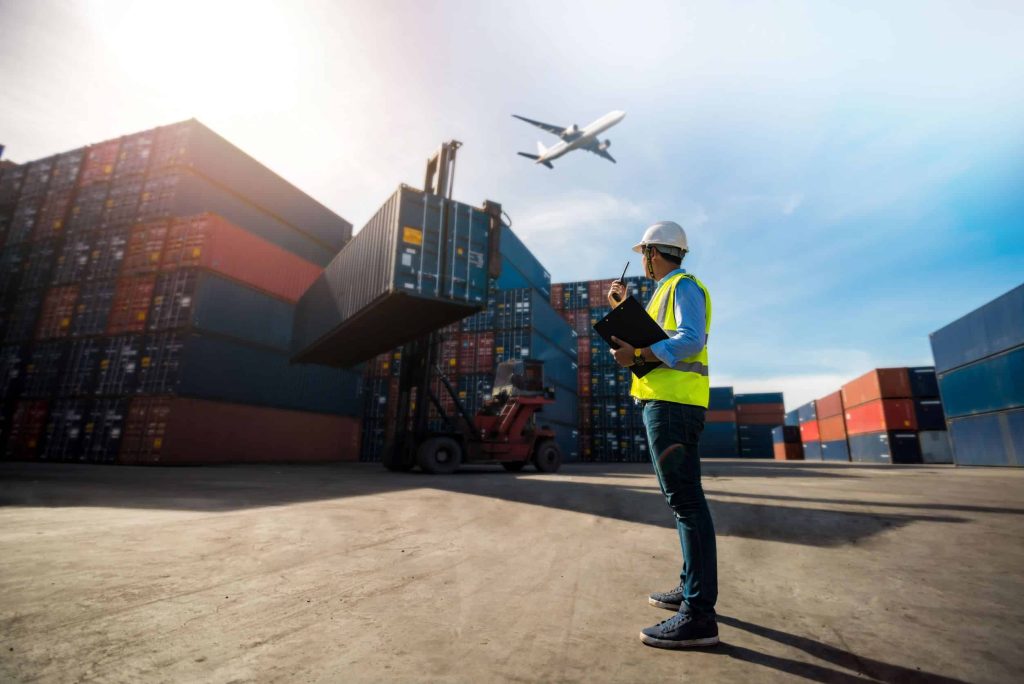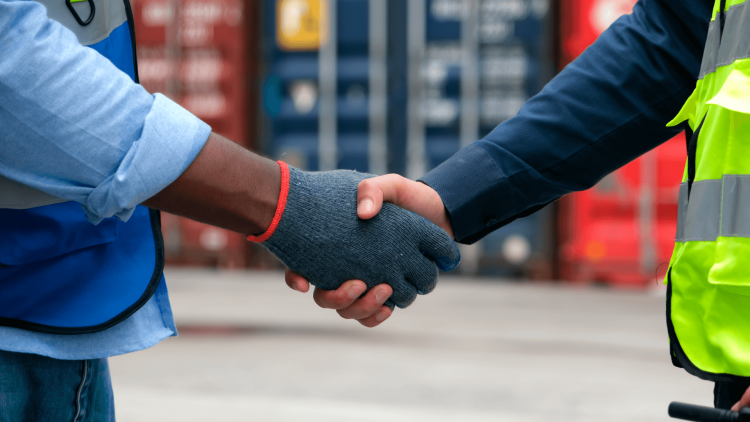Introduction
Supply chain management is the backbone of global trade, involving a series of steps that bring goods from suppliers to consumers, often crossing international borders. With so many actors involved—producers, distributors, logistics providers, retailers, and consumers—supply chains are highly complex, opaque, and prone to inefficiencies and errors. Moreover, as global commerce has expanded, so too have the risks of fraud, counterfeiting, and supply chain disruptions.
In response to these challenges, blockchain technology has emerged as a powerful tool that can transform supply chain management. By leveraging the unique characteristics of blockchain, such as transparency, immutability, and decentralization, businesses can gain greater control over their supply chains, ensuring products are sourced ethically, delivered on time, and remain free from tampering.
In this article, we will explore how blockchain technology can enhance the transparency and efficiency of supply chains, addressing key challenges and offering solutions that benefit both businesses and consumers.
Understanding Blockchain Technology
At its core, blockchain is a distributed ledger technology (DLT) that records transactions in a secure, transparent, and immutable way. Each piece of data, or block, is linked to the previous one, forming a chain of information that is resistant to tampering. This decentralized and cryptographic nature of blockchain ensures that all participants in a supply chain can access the same data, improving trust, visibility, and accountability.
Key features of blockchain that are particularly relevant to supply chain management include:
- Immutability: Once recorded, data cannot be altered, ensuring the integrity of supply chain records.
- Transparency: All participants in the blockchain network have access to the same information, enhancing visibility into each stage of the supply chain.
- Decentralization: No single entity controls the blockchain, making it less vulnerable to fraud and manipulation.
- Smart Contracts: Self-executing contracts that automatically enforce terms once predefined conditions are met, helping to streamline processes.
The Challenges in Supply Chain Management
Before exploring how blockchain addresses these issues, let’s review some of the common challenges faced by traditional supply chains:
- Lack of Transparency:
- Traditional supply chains often operate in silos, with each participant (e.g., suppliers, manufacturers, logistics providers) having their own record-keeping systems. This fragmented approach limits the ability to track products in real-time and verify their origins, leading to inefficiencies and trust issues between partners and consumers.
- Fraud and Counterfeiting:
- Counterfeit goods, especially in industries like pharmaceuticals, luxury goods, and electronics, pose serious risks to consumers and brands. Lack of traceability makes it difficult to verify whether a product is genuine or has been tampered with during the supply chain process.
- Inefficiencies and Delays:
- Traditional systems often rely on manual paperwork and centralized databases, leading to bottlenecks, human errors, and delays in communication between various stakeholders. This can result in higher operational costs, delayed shipments, and inaccurate inventory records.
- Ethical Sourcing and Sustainability:
- With growing concerns over environmental sustainability and ethical sourcing, companies are under pressure to provide verifiable information about the origin of their products. Traditional supply chains lack the ability to efficiently track the entire lifecycle of a product, from raw material sourcing to manufacturing.
- Data Fragmentation:
- The lack of standardized data formats and systems between different supply chain stakeholders creates fragmented, incompatible records. This makes it challenging to share information and collaborate across different systems.
How Blockchain Enhances Transparency in Supply Chains
Blockchain’s transparency feature enables all participants in a supply chain to access the same data in real-time, allowing for greater visibility into the entire supply chain process. Here’s how blockchain achieves this:
1. Real-Time Data Access for All Stakeholders
In a blockchain-powered supply chain, every participant—whether it’s a supplier, distributor, or retailer—has access to a single, shared ledger that records every transaction, shipment, and handoff. This shared visibility ensures that each party can verify the current status of goods as they move through the supply chain.
- Example: If a product is shipped from a manufacturer to a warehouse, each step in the process (e.g., inspection, shipment date, destination) is recorded on the blockchain. This data is available to all parties involved, ensuring transparency and accountability.
- Impact: Real-time tracking minimizes delays, reduces the risk of miscommunication, and allows for better decision-making, as stakeholders can quickly identify and address issues such as shipping delays, inventory shortages, or quality problems.
2. Verification of Product Authenticity
Blockchain enables the traceability of every product or material in the supply chain, from raw materials to finished goods. By assigning each product a unique identifier or QR code that links to the blockchain, consumers and businesses can verify the authenticity and origin of a product.
- Example: For luxury goods or pharmaceuticals, blockchain can track the entire lifecycle of a product, including its origin, processing, shipment, and distribution. Consumers can use a mobile app to scan the QR code and access a detailed record of the product’s journey, ensuring that it’s genuine and has not been tampered with.
- Impact: This traceability reduces the risks of counterfeiting and fraud, providing consumers with confidence in the authenticity of the products they purchase and helping businesses protect their brand reputation.
3. Enhanced Compliance with Regulations
Blockchain makes it easier for companies to comply with industry regulations, as all data related to product sourcing, manufacturing, and shipping is recorded in a transparent and immutable ledger. Regulatory authorities can access the data in real-time, ensuring that products meet the required standards for quality, safety, and sustainability.
- Example: In the food industry, blockchain can be used to track the entire journey of a product, from the farm to the supermarket shelf. If there is a food safety issue, the blockchain can quickly identify where the problem originated, allowing for efficient recalls and ensuring compliance with health and safety regulations.
- Impact: Blockchain reduces the risks of regulatory violations, improves auditability, and enhances the company’s ability to demonstrate its commitment to quality and compliance.
How Blockchain Improves Efficiency in Supply Chains
Blockchain doesn’t just enhance transparency; it also streamlines processes, reducing operational inefficiencies and automating tasks that would otherwise require manual intervention. Here’s how blockchain boosts efficiency:
1. Smart Contracts for Automation
One of the most powerful features of blockchain is its ability to support smart contracts—self-executing contracts where the terms are automatically enforced when predefined conditions are met. This eliminates the need for intermediaries and manual verification, speeding up processes and reducing errors.
- Example: A smart contract can be used to automatically release payment to a supplier when certain conditions are met, such as the delivery of goods or the successful inspection of products. No human intervention is required, reducing delays and administrative costs.
- Impact: Smart contracts increase the speed and accuracy of transactions, reduce the risk of fraud, and lower operational costs by automating routine tasks.
2. Reduced Paperwork and Manual Data Entry
Traditional supply chains often rely on paper-based systems or centralized databases, leading to inefficiencies and the potential for errors. Blockchain eliminates the need for paper records by providing a digital, decentralized ledger that stores all transactions securely and immutably.
- Example: In logistics, blockchain can replace paper bills of lading, invoices, and shipping documents with digital records stored on the blockchain. This reduces administrative overhead, the risk of lost documents, and the potential for human error.
- Impact: Blockchain simplifies the documentation process, reduces the need for intermediaries, and speeds up data entry and processing, resulting in faster and more accurate supply chain operations.
3. Improved Inventory Management
Blockchain can enhance inventory management by providing accurate, real-time data on stock levels, shipments, and warehouse locations. This data can be shared across the entire supply chain, ensuring that all stakeholders have up-to-date information on inventory status.
- Example: Retailers can use blockchain to track the movement of products from warehouses to stores, reducing the risk of stockouts or overstocking. The system can automatically update inventory records in real-time, based on data shared by suppliers, manufacturers, and logistics providers.
- Impact: Blockchain ensures that inventory data is accurate and transparent, helping businesses optimize stock levels, reduce waste, and improve forecasting.
4. Faster and More Reliable Payments
Blockchain’s ability to facilitate instantaneous transactions can significantly speed up the payment process in supply chains. Traditional payment systems often involve delays due to intermediaries, bank processing times, and international transfers. Blockchain, however, enables peer-to-peer payments without the need for intermediaries.
- Example: Cross-border payments between companies in different countries can be streamlined using blockchain-based cryptocurrencies or stablecoins, reducing fees and waiting times associated with traditional bank transfers.
- Impact: Faster payments improve cash flow for businesses, reduce transaction costs, and help build trust between suppliers and buyers.

Real-World Examples of Blockchain in Supply Chain Management
Several companies have already begun to implement blockchain technology in their supply chains to enhance transparency and efficiency. Some notable examples include:
- Walmart and IBM Food Trust
- Walmart, in collaboration with IBM, has implemented a blockchain-based platform called Food Trust to track the journey of food products from farm to store. This system provides end-to-end traceability, helping to improve food safety and reduce
waste by enabling quick responses to recalls.
- De Beers and Diamond Tracking
- De Beers, a leading diamond company, uses blockchain to track the provenance of diamonds, ensuring that they are not conflict diamonds. The system helps verify the authenticity of each diamond and ensures that it is ethically sourced.
- Maersk and IBM TradeLens
- Maersk, a global shipping giant, has partnered with IBM to develop TradeLens, a blockchain-powered platform that enables end-to-end visibility and collaboration across the global supply chain. This system streamlines shipping processes and improves efficiency in port operations.
Conclusion
Blockchain technology offers significant improvements to both transparency and efficiency in supply chain management. By providing real-time, immutable records and automating key processes with smart contracts, blockchain enables companies to gain better visibility into their supply chains, reduce fraud, and streamline operations.
Although challenges remain—such as the need for standardization, regulatory hurdles, and integration with existing systems—the growing adoption of blockchain by major companies in industries like food, luxury goods, and logistics shows that the technology is already proving its worth.
As blockchain continues to evolve, it is likely to become an essential tool in creating more efficient, transparent, and secure global supply chains, benefiting businesses, consumers, and the environment alike.
















































